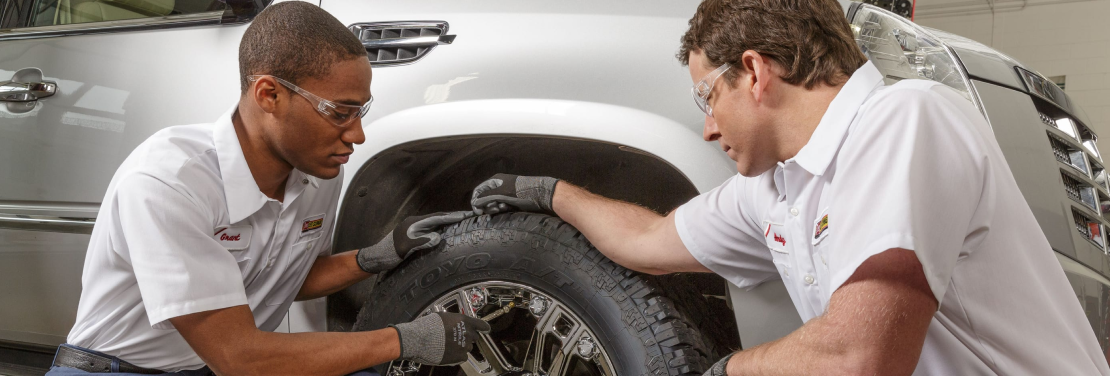Depend On Morris Tire and Alignment for Expert Service and Care
Depend On Morris Tire and Alignment for Expert Service and Care
Blog Article
Tire Solution: Understanding Tire Pressure Tracking Systems
Recognizing Tire Stress Surveillance Equipments (TPMS) is a crucial aspect of preserving optimum car performance and security on the roadway. With advancements in auto technology, TPMS has ended up being a typical attribute in contemporary cars, offering real-time details on tire stress levels.

Relevance of TPMS
The relevance of Tire Pressure Monitoring Systems (TPMS) hinges on their capability to enhance car security and performance with real-time tracking of tire pressure degrees. Preserving the appropriate tire pressure is critical for guaranteeing optimal handling, braking, and total safety of a vehicle. TPMS gives chauffeurs with immediate comments on any underinflated or overinflated tires, enabling timely modifications to be made.
Parts of TPMS
Consisting of numerous necessary aspects, a Tire Stress Surveillance System (TPMS) works as an innovative security function in modern automobiles. The primary components of a TPMS consist of sensing units, a control module, and a warning sign. Sensing units are typically situated in the tire valve stem or attached to the wheel setting up, where they measure tire pressure and transfer data to the control module. The control module procedures this details and activates a caution if it spots considerably reduced stress in any of the tires. The caution indicator, typically an icon on the dashboard, alerts the motorist to inspect the affected tire or tires. Some advanced TPMS designs likewise show the real tire stress analyses for every tire, providing motorists with real-time information to guarantee optimum tire efficiency and safety and security. By keeping track of tire stress constantly, TPMS assists stop mishaps, reduces tire wear, and improves fuel efficiency, making it an important component for lorry safety and performance.
Sorts Of TPMS

On the other hand, indirect TPMS relies on the car's wheel speed sensing units to monitor tire stress. This system spots underinflation by contrasting the rotational speeds of the wheels. Indirect TPMS is less expensive than straight TPMS, as it makes use of existing sensors within the lorry.
While straight TPMS uses much more accurate analyses, indirect TPMS is less complex in layout visite site and commonly requires less upkeep. Both systems have their benefits and restrictions, and the selection in between them usually relies on aspects such as price, automobile make, and personal choice. Comprehending the distinctions between these 2 kinds of TPMS can aid automobile proprietors make educated view it decisions concerning tire maintenance and safety.
TPMS Upkeep Tips
Effective upkeep of TPMS is essential for making sure optimum efficiency and security of your lorry. Regularly inspecting the TPMS sensing units for any damages or rust is important. Guarantee that the sensing units are tidy and cost-free from debris that can disrupt their functioning. In addition, it is advisable to check the sensor batteries regularly and change them as required to ensure precise readings. Conduct regular checks on the tire stress degrees and contrast them with the TPMS analyses to guarantee they correspond. If there are any type of discrepancies, alter the system following the supplier's standards. Throughout tire turning or substitute, make certain that the TPMS components are managed carefully to stop any kind of prospective damages. Last but not least, if the TPMS cautioning light brightens on the dashboard, deal with the problem without delay by examining the tire stress and the overall system for any type of mistakes. By sticking to these upkeep pointers, you can prolong the life-span of your TPMS and boost the safety and security of your driving his comment is here experience.
Advantages of Appropriate Tire Stress
Maintaining proper tire pressure, as emphasized in TPMS Upkeep Tips, is crucial for reaping the many benefits associated with ideal tire stress degrees. In addition, correct tire pressure guarantees also tire wear, extending the life expectancy of the tires and promoting much safer driving problems. In conclusion, the advantages of appropriate tire stress go past simply tire long life; they incorporate enhanced fuel effectiveness, boosted safety, better automobile efficiency, and general driving comfort.
Verdict
To conclude, understanding tire pressure surveillance systems (TPMS) is vital for keeping optimal tire stress and making certain vehicle safety and security. By acknowledging the relevance of TPMS, recognizing with its elements, knowing the different kinds available, sticking to correct maintenance ideas, and realizing the advantages of maintaining appropriate tire pressure, motorists can enhance their driving experience and lengthen the life-span of their tires. Proper tire stress is key to secure and efficient car operation.

Report this page